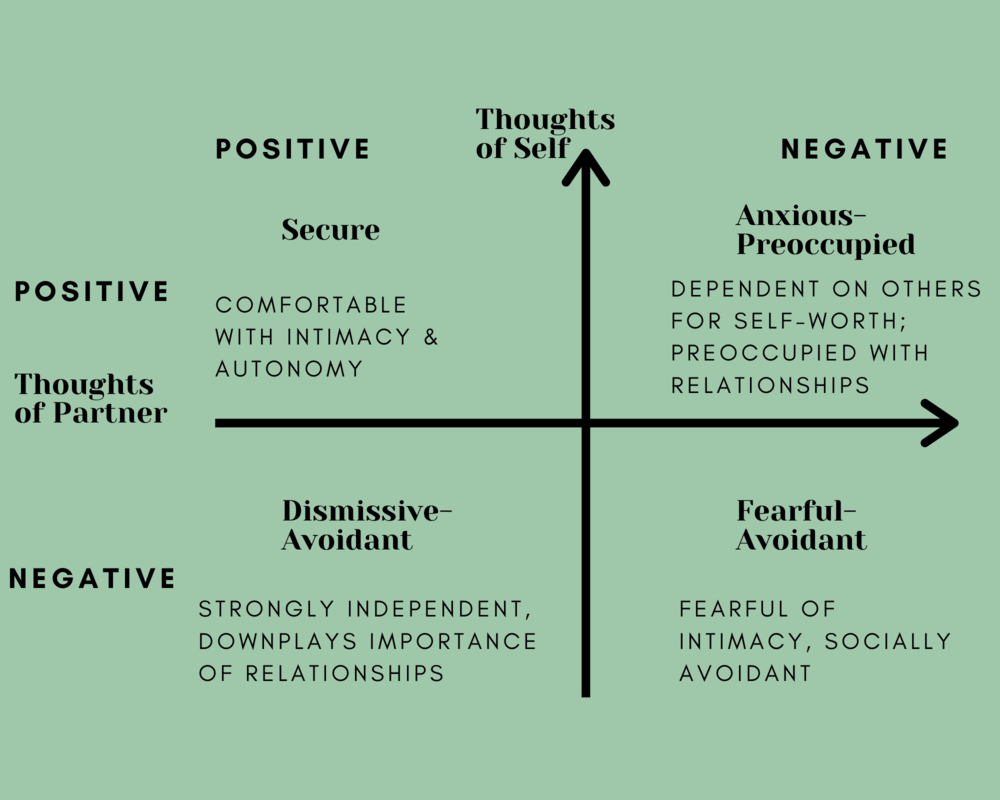Mary Main wanted to develop a tool to assess adult attachment too, so she and her colleagues developed the Adult Attachment Interview with 20 questions about the quality of childhood attachment with the primary caregivers and significant others and how these experiences and relationships affected the personality of the adult being questioned.
In addition, there are some questions about other significant life events, such as loss and trauma. In addition, there are some questions about how childhood experiences impacted on parenting style in later life. The adult’s general state of mind regarding attachment can be examined by using this tool. In the 1980s Main and her colleagues observed interviewees and based on these they created three categories of adult attachment styles. Apart from the content of the responses, the manner and the relevance of the responses had also significance during the assessment. They also found a strong correlation between the mother’s internal working model of attachment and how the infant was attached in infancy, and also in later life, by conducting longitudinal studies. This suggests that relational patterns may be passed on through generations and may have long lasting effects on how we form, maintain and end relationships.
Securely attached adults have a positive self image and a positive image of others, they have a sense of worthiness and expect others to be accepting and responsive to their emotional needs. They can form trusting relationships and they value relationships and expect their needs to be met. (as a result of consistent, responsive, sensitive parenting) They are ready to discuss the AAI questions in a collaborative way and seem to be objective when talking about past experiences with significant others. (no distortion) Their narrative is coherent and concise.
Adults who have a dismissive/avoidant attachment style hold a positive self-image and negative image of others. They avoid emotional intimacy and being vulnerable. They learnt not to demand too much from the caregiver and expect their needs won’t be met. (as a result of disengaged parenting) They downplay the importance of being attached and view others as untrustworthy, they don’t value relationships. They value their independence more and are self-reliant. They are brief and general when answering the AAI questions. They also have difficulty viewing others without distortion.
Adults with a preoccupied (anxious) attachment style have negative self-image and positive image of others. They feel unworthy, they seek validation and approval from others. They learned that to get their caregiver’s attention and to get their needs met, they had to be demanding. (inconsistent parenting) They seek higher levels of contact and intimacy in relationships and are fearful of losing relationships. They tend to be preoccupied with past attachment relationships and experiences. They may ramble when answering the AAI questions and have difficulty viewing others without distortions.

Most people oscillate between different attachment styles and we can display different attachment styles in relation to parents and friends.
Being aware of our subjective experiencing and reflecting on these including our attachment styles can be very helpful in therapy. Reconceptualising past experiences and changing internal working models is possible, according to research about 30 % of people managed to change their attachment styles.
In therapy the counsellor can provide a secure base and a sort of reparative relationship can be created. Healthier relational patterns can be experienced by the client, with the help of the counsellor’s non-defensive communication style.
Bibliograpy:
Huang, S (2020, Nov 03). Attachment styles. Simply Psychology. https://www.simplypsychology.org/attachment-styles.html
https://www.goodtherapy.org/blog/patterns-of-attachment-in-adults/
https://www.verywellmind.com/attachment-styles-279534
No comments:
Post a Comment